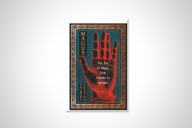You have /5 articles left.
Sign up for a free account or log in.
Half a century before "The Sopranos" hit its stride, the Caribbean historian and theorist C.L.R. James recorded some penetrating thoughts on the gangster -- or, more precisely, the gangster film -- as symbol and proxy for the deepest tensions in American society. His insights are worth revising now, while saying farewell to one of the richest works of popular culture ever created.
First, a little context. In 1938, shortly before James arrived in the United States, he had published The Black Jacobins, still one of the great accounts of the Haitian slave revolt. He would later write Beyond a Boundary (1963), a sensitive cultural and social history of cricket – an appreciation of it as both a sport and a value system. But in 1950, when he produced a long manuscript titled “Notes on American Civilization,” James was an illegal alien from Trinidad. I have in hand documents from his interrogation by FBI agents in the late 1940s, during which he was questioned in detail about his left-wing political ideas and associations. (He had been an associate of Leon Trotsky and a leader in his international movement for many years.)
In personal manner, James was, like W.E.B. DuBois, one of the eminent black Victorians -- a gentleman and a scholar, but also someone listening to what his friend Ralph Ellison called “the lower frequencies” of American life. The document James wrote in 1950 was a rough draft for a book he never finished. Four years after his death, it was published as American Civilization (Blackwell, 1993). A sui generis work of cultural and political analysis, it is the product of years of immersion in American literature and history, as well as James’s ambivalent first-hand observation of the society around him. His studies were interrupted in 1953 when he was expelled by the government. James was later readmitted during the late 1960s and taught for many years at what is now the University of the District of Columbia.
American Civilization's discussion of gangster films is part of James's larger argument about media and the arts. James focuses on the role they play in a mass society that promises democracy and equality while systematically frustrating those who take those promises too seriously. Traveling in the American South in 1939 on his way back from a meeting with Trotsky in Mexico, James had made the mistake of sitting in the wrong part of the bus. Fortunately an African-American rider explained the rules to him before things got out of hand. But that experience -- and others like it, no doubt -- left him with a keen sense of the country's contradictions.
While James's analysis of American society is deeply shaped by readings of Hegel and Marx, it also owes a great deal to Frederick Jackson Turner’s theory of “the closing of the frontier.” The world onscreen, as James interpreted it, gave the moviegoer an alternative to the everyday experience of a life “ordered and restricted at every turn, where there is no certainty of employment, far less of being able to rise by energy and ability by going West as in the old days.”
Such frustrations intensified after 1929, according to James’s analysis. The first era of gangster films coincided with the beginning of the Great Depression. “The gangster did not fall from the sky,” wrote James. “He is the persistent symbol of the national past which now has no meaning – the past in which energy, determination, bravery were sure to get a man somewhere in the line of opportunity. Now the man on the assembly line, the farmer, know that they are there for life; and the gangster who displays all the old heroic qualities, in the only way he can display them, is the derisive symbol of the contrast between ideals and reality.”
The language and the assumptions here are obviously quite male-centered. But other passages in James’s work make clear that he understood the frustrations to cross gender lines -- especially given the increasing role of women in mass society as workers, consumers, and audience members.
“In such a society,” writes James, “the individual demands an aesthetic compensation in the contemplation of free individuals who go out into the world and settle their problems by free activity and individualistic methods. In these perpetual isolated wars free individuals are pitted against free individuals, live grandly and boldly. What they want, they go for. Gangsters get what they want, trying it for a while, then are killed.”
The narratives onscreen are a compromise between frustrated desire and social control.“In the end ‘crime does not pay,’” continues James, “but for an hour and a half highly skilled actors and a huge organization of production and distribution have given to many millions a sense of active living....”
Being a good Victorian at heart, James might have preferred that the audience seek “aesthetic compensation” in the more orderly pleasures of cricket, instead. But as a historian and a revolutionary, he accepted what he found. In offering “the freedom from restraint to allow pent-up feelings free play,” gangster movies “have released the bitterness, hate, fear, and sadism which simmer just below the surface.” His theoretical framework for this analysis was strictly classical, by the way. James was deeply influenced by Aristotle’s idea that tragedy allowed an audience to “purge” itself of violent emotions. One day, he thought, they would emerge in a new form -- a wave of upheavals that would shake the country to its foundations.
In 6 seasons over 10 years, “The Sopranos” has confirmed again and again C.L.R. James’s point about the gangster is an archetypal figure of American society. But the creators have gone far beyond his early insights. I say that with all due respect to James’s memory – and with the firm certainty that he would have been a devoted fan and capable interpreter.
For James, analyzing gangster films in 1950, there is an intimate connection between the individual viewer and the figure on the screen. At the same time, there is a vast distance between them. Movies offered the audience something it could not find outside the theater. The gangster is individualism personified. He has escaped all the rules and roles of normal life. His very existence – doomed as it is – embodies a triumph of personal will over social obligation.
By contrast, when we first meet Tony Soprano, a boss in the New Jersey mob, he is in some ways all too well integrated into the world around him. So much so, in fact, that it is giving him panic attacks from trying to meet all the demands from juggling the different roles he plays. In addition to being pater of his own brood, residing in a suburban McMansion, he is the dutiful (if put-upon) son in a dysfunctional and sociopathic family.
And then there are the pressures that attend being the competent manager of a successful business with diversified holdings. Even the form taken by his psychic misery seems perfectly ordinary: anxiety and depression, the tag-team heart-breakers of everyday neurosis.
James treats the cinematic gangsters of yesteryear as radical individualists – their crimes, however violent, being a kind of Romantic refusal of social authority. But the extraordinary power of “The Sopranos” has often come from its portrayal of an almost seamless continuum between normality and monstrosity. Perhaps the most emblematic moment in this regard came in the episode entitled “College,” early in show’s first year. We watch Tony, the proud and loving father, take his firstborn, Meadow, off to spend a day at the campus of one of her prospective colleges. Along the way, he notices a mobster who had informed to the government and gone into the witness protection program. Tony tracks the man down and strangles him to death.
At the college he sees an inscription from Hawthorne that reads, “No man ... can wear one face to himself and another to the multitude, without finally getting bewildered as to which one may be true." Earlier, we have seen Tony answer Meadow’s question about whether he is a member of the Mafia by admitting that, well, he does make a little money from illegal gambling, but no, he isn't a gangster. So the quotation from Hawthorne points to one source of Tony’s constant anxiety. But it also underscores part of the audience’s experience – an ambivalence that only grows more intense as “The Sopranos” unfolds.
For we are no more clear than Tony is which of his faces is “true.” To put it another way, all of them are. He really is a loving father and a good breadwinner (and no worse a husband, for all the compulsive philandering, than many) as well as a violent sociopath. The different sides of his life, while seemingly distinct, keep bleeding into one another.
Analyzing the gangster as American archetype in 1950, C.L.R. James found a figure whose rise and fall onscreen provided the audience with catharsis. With “The Sopranos,” we’ve seen a far more complex pattern of development than anything found in Little Caesar or High Sierra (among other films James had in mind).
With the finale, there will doubtless be a reminder – as in the days of the Hays Code – that “crime does not pay.” But an ironized reminder. After all, we’ve seen that it can pay pretty well. (As Balzac put it, “Behind every great fortune, a great crime.”) Closure won’t mean catharsis. Whatever happens to Tony or his family, the audience will be left with his ambivalence and anxiety, which, over time, we have come to make our own.








